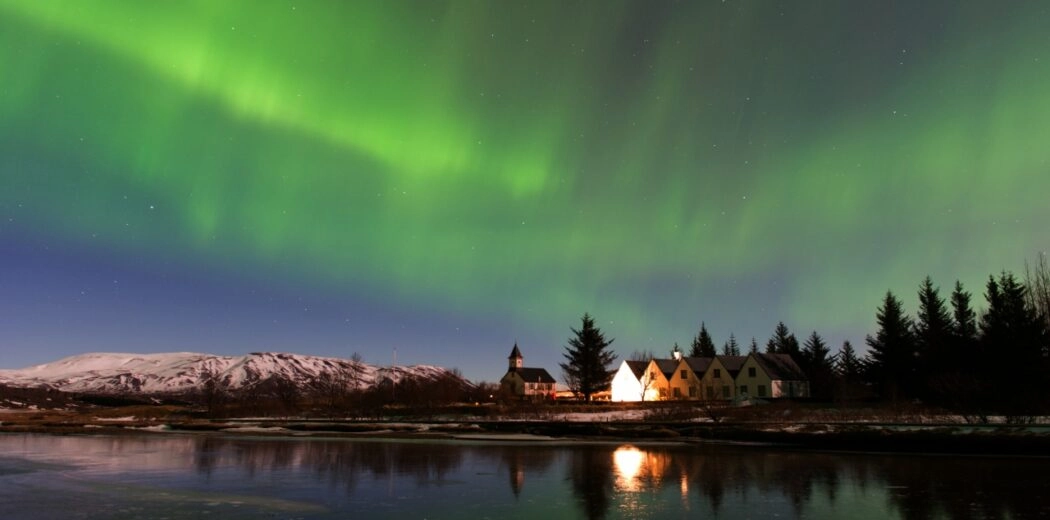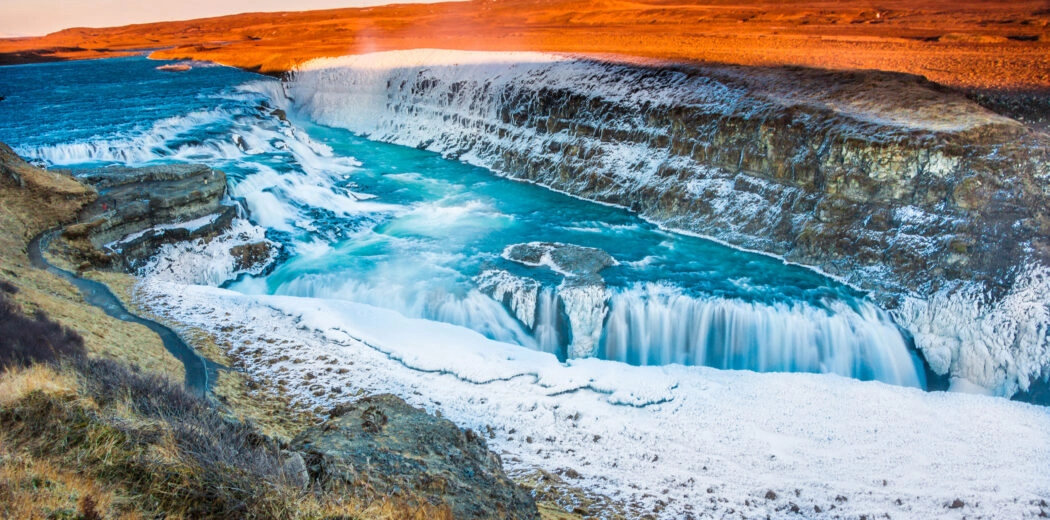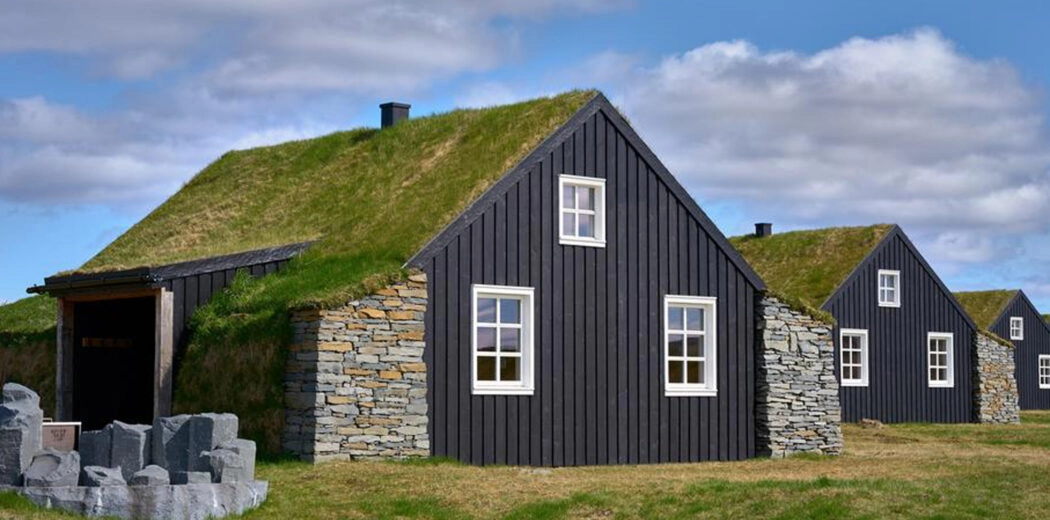The best time to visit Iceland for hiking, midnight sun and outdoor activities is between June, July and August. These months bring average highs of 13°C (55°F). To see the northern lights and ice caves, visit during the winter months between November to April, with lows of -2°C (28.4°F) and snowy, icy conditions.
The warm summer months spanning June to August are perfect for hiking and outdoor pursuits. A cold, snowy winter begins at the end of October until April when exhilarating, off-road, super jeep excursions traverse the frozen landscapes and freezing ice caves are formed. The shoulder season months of September, April and May offer exclusive experiences with winter and summer excursions available, but with fewer visitors and less crowds.
Keen hikers should visit in July and August when the Icelandic Highlands are accessible. For icey experiences in Southern Iceland's caves or seeing the Vatnajokull Glacier, December to February are great months. The period between May and August is wonderful for spotting puffins in the Eastern Fjords.
During the winter months between November and April, visitors head to Northern Iceland to catch a glimpse of the elusive northern lights.
Monthly Climate Guide for Iceland
Iceland has its fair share of freezing weather. However, the seasonal changes are remarkable. An impassable snowy peak in winter becomes a glorious hiking trail in summer. We’ve put together a month by month climate guide to help you decide on the best time to visit Iceland.
A cold, wet month with just 5 hours of daylight. The winds can whip up quickly on higher ground and on the coast, feeling very cold. Expect snow and ice intermedly on lower ground and mountains will be snowcapped. Now is a good time of year to walk inside the completely frozen cathedral-like ice caves in the Golden Circle and Southern Iceland.

A similar month to January with slightly more rain and sleet. February is the wettest month and one of the most unpredictable with sunny spells occasionally peaking through the clouds followed by overcast skies and extreme cold. Expect snow, sleet, rain and sun.
This is a good time of year for winter activities such as hiking, ice caves and for whale watching on trips from the capital.

In March there’s a small nod towards spring as the temperatures climb and rainfall decreases slightly. The days are longer with 12 hours of daylight. Another good month for glimpsing the northern lights and whale watching excursions. Winter activities are still possible now such as snowmobiling and snowshoe hikes in Southern Icelandand the Icelandic Highlands.

April marks the start of spring and the temperatures rise a little more, it’s no longer freezing at nighttime. This is the month locals start to enjoy the outdoors before the visitors arrive in the summer. One of the more variable months in the climate calendar where a cross section of summer and winter activities can be enjoyed.

The dawn of summer and temperatures continue to climb. There’s plenty of sunlight and sheltered areas can feel quite pleasant at times. The snow is melting and landscapes turn green in its place. Livestock now feature on the lush farmland as they enjoy the new pastures and warmer weather. The rain can pick up again in May so be prepared for some showers. Puffins now return to land and be viewed on the South Coast, Western Fjords and Eastern Fjords.

Famous for its midnight sun, it’s unlikely to see a full sunset in June. Warmer temperatures mark the official start of summer and the hiking season. Even the most remote and high altitude passes can now be traversed on foot. The Icelandic National Day takes place in June with a celebratory parade which winds through the streets of Reykjavik.

One of the most popular months to visit Iceland due to its weather. Milder days and clear skies are the perfect conditions for outdoor pursuits and enjoying the countryside and coastline. Sharp breezes can still come in from the Atlantic so a jacket is still recommended on excursions. July is a stunning month for summer activities, enjoying the countryside and hiking. The summer months are also great for helicopter sight-seeing tours. Although you will still need to wrap up warm, the conditions are a little more pleasant than during the winter. In the summer more flights are able to go ahead, without the threat of the snow storms and high winds grounding the helicopters.

Similar to July, another very popular month to travel to Iceland. Temperatures are starting to drop a little now, it’s not quite as warm and daylight is down to around 16 hours a day. However, August is still well and truly summer and many activities can be enjoyed. Reykjavik hosts its annual Culture Night in August with free entrance to museums and arts and music events popping all over the capital.

The weather during September can vary between the start and end of the month. The start of the month will still feel like summer but by the end of the month the temperatures have started to cool off and winter feels just around the corner. Most hiking trails are still passable with beautiful views over the changing scenery as winter approaches.

Winter is now settling over Iceland. Wild storms are common and temperatures drop. Some days will still cling onto the less extreme low temperatures but overall October should be treated as a winter month. October is one of the first months of the year that the northern lights start to appear, especially in the north of Iceland.

Another month that will end a little differently to how it began. 8 hours of daylight on the 1st will decrease to less than 5 hours by the start of December. Wind, rain, sleet and snow are common throughout the day. Roads are icy and slippery and specialist winter-wear is necessary for outdoor activities. November is considered a great month for getting into remote areas to witness the northern lights.
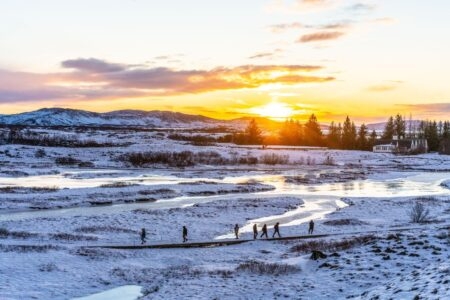
This is Iceland’s darkest month with only around 4 to 5 hours of daylight. December is also Iceland’s coldest month. The higher ground is now impassable, covered in snow and ice. It is one of the best months for winter activities and roaring log fires in cosy cabins and hotels such as Deplar Farm.

Top Things to Do in Iceland
The top things to do in Iceland are often dictated by the seasons, focusing largely on Iceland’s other-wordly, great outdoors. There’s hikes to luna-like lava fields, horse rides to crashing waterfalls and mysterious ice caves to explore. There’s culture too; art and museum tours, viking history and foodie adventures, all waiting for you.
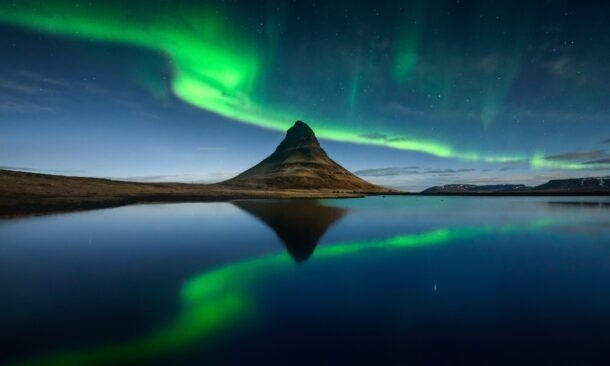
Glimpse the northern lights
The best time to visit Iceland for the northern lights is between October and March. The spellbinding auroras sometimes start to appear at 5pm, so the early winter sunsets and long, dark nights are the essential backdrop for excellent displays. Skies must be clear, so sightings are weather dependent.
Where you go can increase your chances to see the northern lights. Although the auroras can sometimes be spotted from just outside Reykjavik, heading into remote areas is recommended for dramatic light intensity. For a luxurious stay in the wilderness head to Deplar Farm in the middle of the Troll Peninsula. For complete isolation travel by super jeep into the depths of the Icelandic highlands and stay at the solitary Midgard Hut. The Snaefellsnes Peninsula provides a dramatic backdrop of glaciers, rock formations and windswept beaches while the crashing waterfalls in the north can result in spellbinding views and photographs of the lights.

Whale watching in Iceland
The best time to visit Iceland for whale watching is between February and March, when Orcas come close to the shore in the west. From May to September it’s possible to spot humpback whales on boat trips from Reyjakavik. Minke whales and dolphins can be spotted year round.

Spot puffins
The best time to visit Iceland to see puffins is between May and August. Puffins live at sea all winter and arrive for the summer, leaving in late August. During the day, they are often at sea, fishing, so sightings are best in the evening when they’re the most active on land.
Puffins can be spotted along Iceland's South Coast and in the very remote Western Fjords, on Látrabjarg cliffs. One of our favourite spots, in the Eastern Fjords, is Borgarfjörður Eystri. A land of elfin queens, turf houses and close encounters with puffins.

Visit the ice caves
The best time to visit Iceland for ice caves is December to February, the coldest months. During the summer the ice melts, causing the arches to disappear or become unstable. A few months of freezing temperatures in early winter reforms the caves, and by December they can be explored again.

Go hiking
The best time to visit Iceland for hiking is during the summer months of June, July and August. During that period, conditions are favourable as compared to winter months when many hiking paths, covered in snow and ice, are blocked. Hiking in Iceland during the summer is impossibly beautiful with stunning terrain and mild weather.
There are hikes in Iceland to suit all experience and activity levels. The Mount Esja trail, in particular, offers epic views over Reykjavik . The hike in Snaefellsnes Peninsula glacier is also beautiful, moderate to easy level (depending on conditions). For more of a challenge the Hornstrandir hike in the Westfjords, over 14 kilometres of rough terrain, promises spectacular views to Drangajökull glacier. There are also helicopter rides with glacier hikes in the Golden Circle and exhilarating ice climbing in Southern Iceland.

Visit the Blue Lagoon
The Blue Lagoon is a year round destination, working well with both summer or winter adventures. The best time to visit the Blue Lagoon for epic sunrises, sunsets and the chance to see the northern lights is during the winter months. For a chance to soak up the unique light of the winter sun, then summer is the best time to visit the Blue Lagoon.
Our Team's Favourite Trips to Iceland
Where to Stay in Iceland
Whatever you want from your trip to Iceland, our team of expert travel designers are ready to help.



